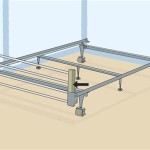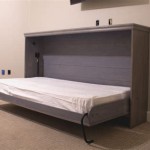How To Raise The Bed For Acid Reflux
Gastroesophageal reflux disease (GERD), commonly known as acid reflux, occurs when stomach acid frequently flows back into the esophagus. This backflow irritates the esophageal lining, leading to a burning sensation in the chest or throat, often referred to as heartburn. While lifestyle modifications and medications can help manage GERD, elevating the head of the bed is a simple, non-pharmacological approach that can significantly reduce nighttime reflux episodes.
Gravity plays a crucial role in managing GERD symptoms. When lying flat, gravity no longer assists in keeping stomach acid down, making it easier for it to flow back into the esophagus. Elevating the head of the bed allows gravity to work more effectively, helping to keep stomach contents in their proper place.
Raising the head of the bed involves more than simply adding extra pillows. While piling up pillows might seem like a quick fix, it primarily elevates the head and neck, bending the body at the waist. This position does not promote proper esophageal clearance and can even exacerbate pressure on the abdomen, potentially worsening reflux. The goal is to create a gentle incline that elevates the entire torso, from head to hips.
The recommended elevation for managing GERD is typically between six to eight inches. This incline provides sufficient elevation to utilize gravity effectively without causing undue strain on the back or neck. It's important to note that this elevation refers to the height of the head of the bed itself, not the number of pillows used.
Several methods can be employed to achieve the desired bed elevation. One of the most effective methods is to use bed risers. These sturdy blocks are placed under the bed frame's legs at the head of the bed. Bed risers are available in various heights and materials, allowing individuals to customize the elevation to their specific needs. Ensuring that the bed risers are placed securely and evenly on a stable surface is crucial for safety and stability.
Another option for elevating the head of the bed is to use a wedge pillow. These specially designed pillows are made of dense foam and have a gentle incline, providing elevation for the entire torso. Wedge pillows are available in various sizes and angles, allowing individuals to choose the most comfortable and effective option. Unlike standard pillows, wedge pillows maintain their shape and provide consistent support throughout the night.
Some individuals may consider adjustable beds as a more comprehensive solution. These beds allow for customized positioning of both the head and foot of the bed. The ability to adjust the incline to the precise angle offers significant flexibility and can be particularly beneficial for individuals with other medical conditions that require specific sleeping positions.
While raising the head of the bed can be highly effective in reducing reflux symptoms, it's important to consider potential drawbacks. Some individuals may experience discomfort in the elevated position, particularly those with back or neck pain. Experimenting with different elevation heights and methods can help determine the most comfortable and effective approach.
In addition to elevating the head of the bed, several other lifestyle modifications can contribute to managing GERD. These include avoiding trigger foods such as fatty or spicy meals, consuming smaller, more frequent meals, and abstaining from eating close to bedtime. Maintaining a healthy weight, quitting smoking, and limiting alcohol consumption can also contribute to reducing reflux episodes.
It's important to consult with a healthcare professional for an accurate diagnosis and personalized treatment plan for GERD. While raising the head of the bed can be a beneficial component of a comprehensive management strategy, it should be implemented in conjunction with other recommended lifestyle changes and medical interventions as advised by a physician. They can help determine the appropriate elevation level and advise on the best method for achieving it based on individual circumstances.
Proper implementation of bed elevation techniques can significantly improve sleep quality and reduce the frequency and severity of GERD symptoms. However, it's essential to approach bed elevation strategically, focusing on creating a gradual incline rather than simply propping up the head with multiple pillows. This careful approach ensures comfort, promotes effective esophageal clearance, and contributes to long-term GERD management.
Choosing the right method for raising the bed depends on individual preferences, budget, and specific needs. While bed risers offer a simple and cost-effective solution, wedge pillows provide a more portable and adaptable option. Adjustable beds provide the greatest degree of customization but come at a higher cost. Careful consideration of these factors can help individuals make an informed decision about the most appropriate method for their situation.

Lifestyle Modifications Sleeping Head Elevated Gerdhelp Com

How To Relieve Acid Reflux With A Raised Bed Pictures

Most Recommended Adjustable Beds For Acid Reflux Bedroom Solutions

Head Of The Bed Elevation For Gerd Reflux Guard

Reflux Guard Under Mattress Bed Wedge For Acid

Manage Acid Reflux More Ezsleep Wedge Equanimo

Elevate The Head Of Bed Put A Wedge Or Books Between Mattress And Springs Acidrefluxsymptoms How To Make Inclined Therapy

Best And Worst Foods For Heartburn Reflux Sgc

How To Raise Your Bed Ease Acid Reflux

How To Relieve Acid Reflux With A Raised Bed Pictures







